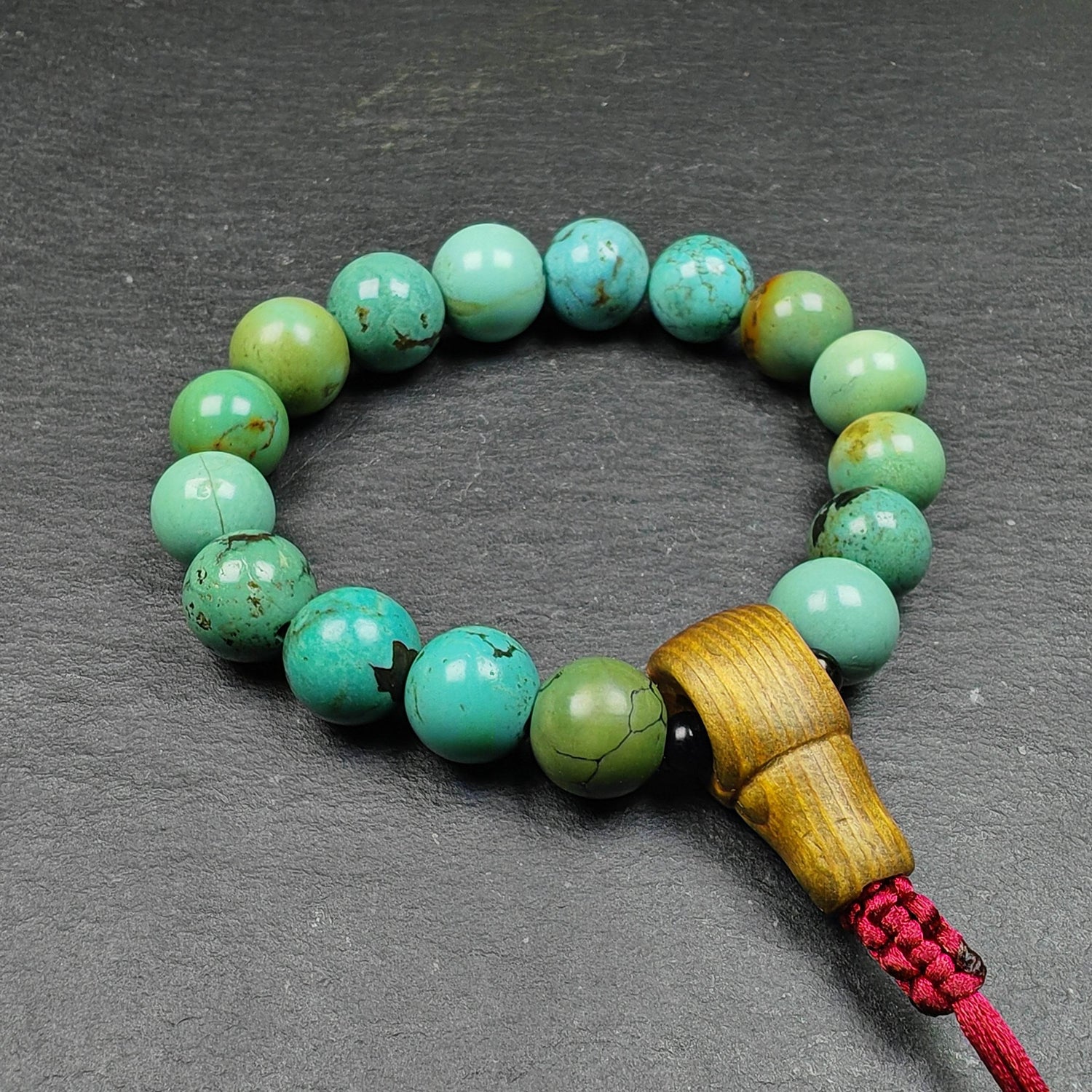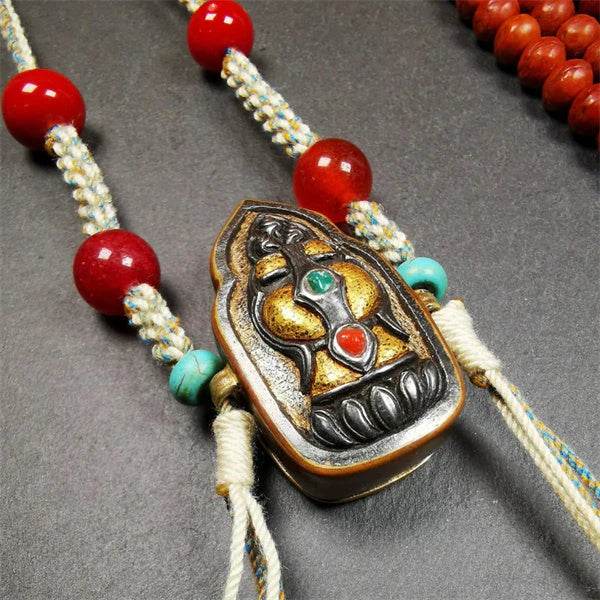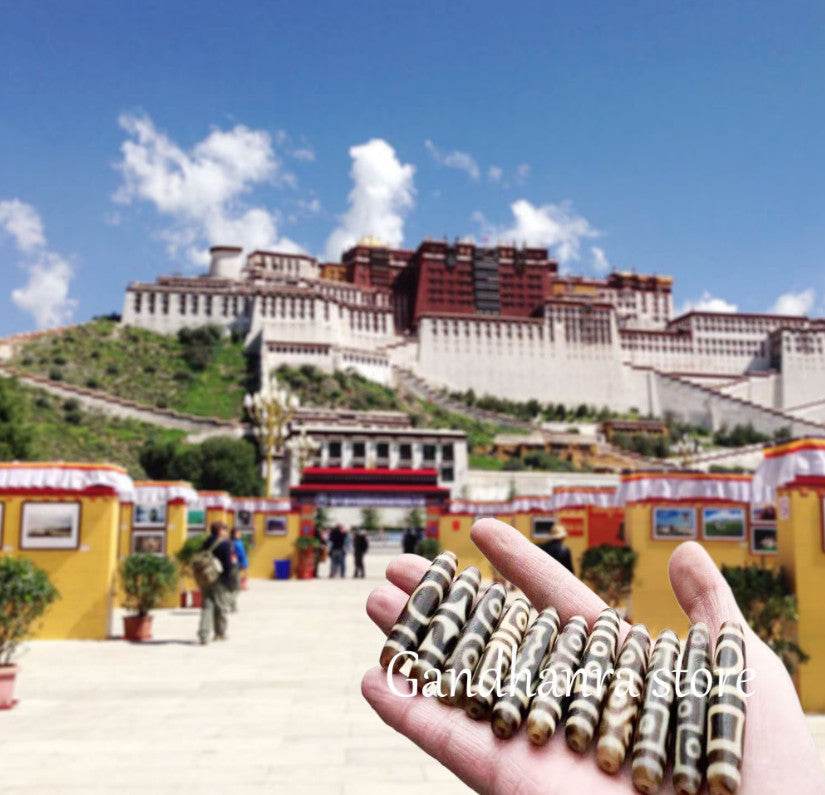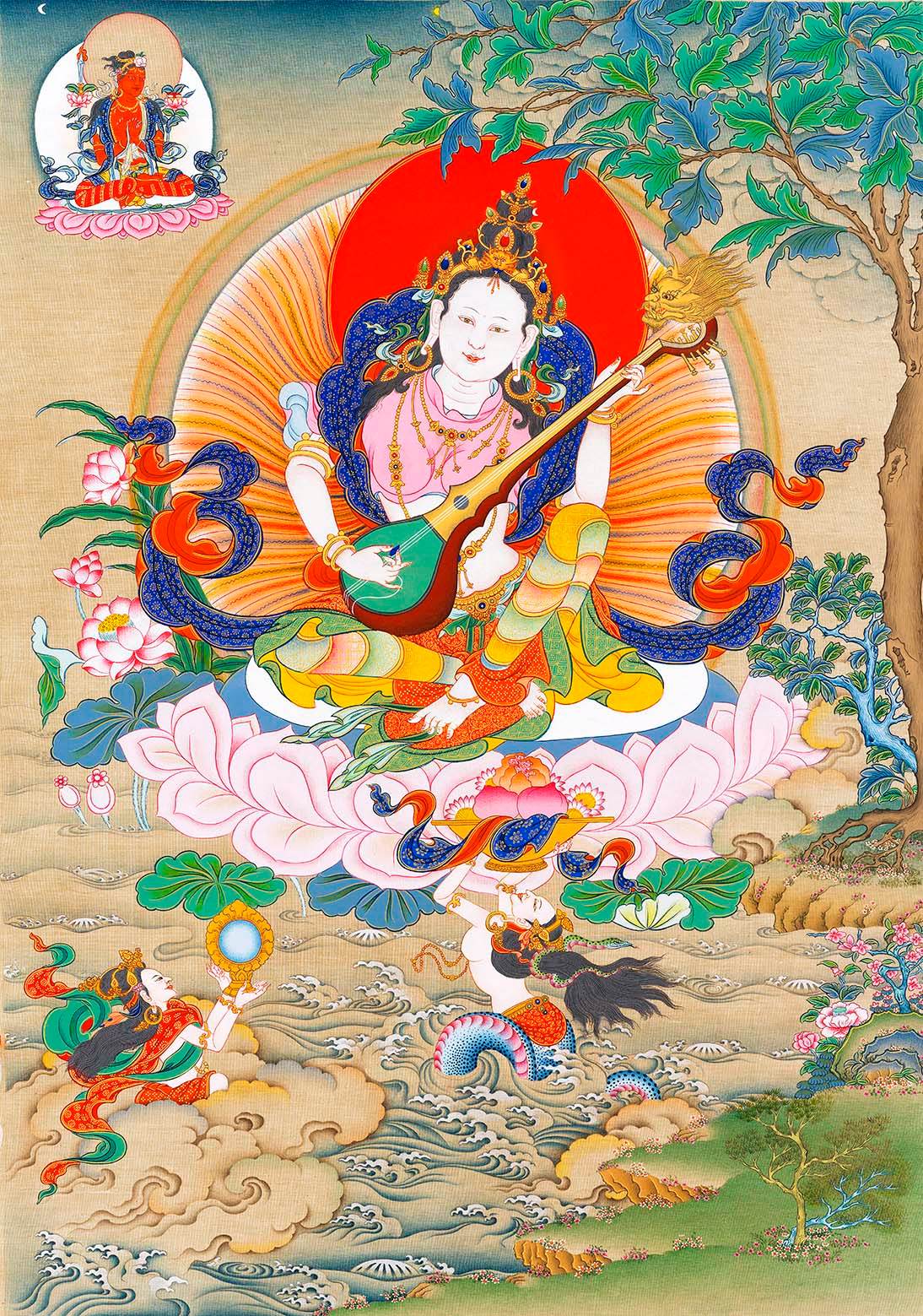
Tinkling Sounds ▎Tibetan Tingsha Bells
Click here to buy Tingsha Bells

"Copper Tingsha Bells and Bell Case"
Late 19th century, Private Collection

"Copper Tingsha Bells and Bell Case"
First half of the 20th century, Private Collection
ཏིང་ཏིང་ཤག་ལ་ཧོར་རྒྱ་བལ་པོ་བོད།
ཧོར་ལ་ཛ་ལན་དྷ་ར་ཤིང་ཀུན་མ།
ཕལ་པའི་རིགས་དང་གསུམ་དུ་དབྱེ་བར་འདོད།
(……)
བོད་ཀྱི་ཏིང་ཤག་བལ་པོའི་དེ་དག་ལས།
ཐོད་ཟླུམ་ཅུང་འཐུག་སྐད་ནི་སྙན་པ་ཡིན།
འདི་དག་བོད་ཏིང་རྙིང་མ་ཡིན་པར་གྲགས།
Tibetan, Han, Nepalese, and Hor Tingsha Bells
Tingsha bells can be divided into four major types.
Among them, Hor-style tingsha further split into three subcategories
(Details will be explained below)
(...)
Compared to Nepalese tingsha, Tibetan ones
Have thicker crowns and more melodious tones—
This refers to the classic Tibetan style.
Excerpted from The White Lotus of Elegant Speech: Abridged Edition
(legs par bshad pa padma dkar po'i chun po)
(1981; Gangtok edition)

"Bon Tradition Zhagari: Woman Holding a Single Cymbal"
16th century, Private Collection
This single-form ritual instrument
belongs to the same cymbal category as tingsha bells,
known as "khro lo" or "shang" in Tibetan.

"Translator Dromi·Shakya Yeshe"
Mid-to-late 16th century, Private Collection
Title, Type, Origin, Function, and Symbolism
These are the five essential aspects to carefully examine when studying ritual objects.
The delicate tinkling that begins in one’s hand and resonates into the distance—
Tingsha (ritual cymbals) have endured as one of Tibetan Buddhism’s most refined ritual instruments for nearly a millennium.
Known in Tibetan as ཏིང་ཤག་ or ཏིང་ཤགས་ (Tingshag),
with variant spellings like ཏིང་ཏིང་ཤག་, ཐིང་ཤགས་, and གཏིང་བཤགས་,
the term loosely translates to "the paired objects that produce a 'ting-ting' sound."
Later scholars expanded its meaning,
interpreting it as "an instrument that brings one into meditative equipoise (ཏིང་ངེ་འཛིན་, ting nge dzin)."
Its paired form is often symbolically linked to the union of deities in tantric practice.
Though some classical texts suggest that various forms of tingsha existed in Tibet during the Early Diffusion of Buddhism,
its formalization as a ritual instrument is commonly attributed to Translator Dromi (འབྲོག་མི་ལོ་ཙཱ་བ་ཤཱཀྱ་ཡེ་ཤེས་, 992–1072).
Legend holds that Dromi’s teacher, Gayadhara (ག་ཡ་དྷ་ར་), was skilled in its use,
as was the Second Karmapa (1204–1283).
The prototype of Tibetan tingsha traces back to South Asian cymbals,
initially serving as markers of status or alms-begging tools.
Tibetan tradition transformed them into sacred instruments—
used in rituals like water offerings (chötrül) and daily mantra recitation.
Within the sonic field created by tingsha,
Sound reveals the profound, dispels afflictions, and embodies wisdom.
In religious musical contexts (e.g., Mani chanting),
their chime gathers devotees, their resonance invites deep absorption.

"The Lamdre Lineage Masters of the Sakya School"
Mid-17th century, Private Collection
Detail: The South Asian Master Gayadhara

"Bronze Tingsha Bells and Storage Case"
19th century, Collection of Museum der Kulturen Basel
In the works of Tibetan craftsmanship (especially in the study of ritual instruments), such as the writings of Jinmei Linba and "The White Lotus of Elegant Speech," people generally classify bell cymbals into four categories: Hall-style, Central Plains-style, Nipalos-style, and Tibetan-style. Among them, the Hall-style can be further divided into three categories (with the best sound and originating from the legendary singing bird/commanding bird). The other three types of bell cymbals each have distinguishing features for identification, as described in the scriptures. In this context, the interpretation of "Hall" (ཧོར་) slightly differs from the existing explanations, with some cases where "Sahall" (ཟ་ཧོར་) is taken as the interpretation. "Hall" can generally refer to the north (based on historical context for specific analysis), while Sahall usually refers to the present-day Dakar region of Bangladesh and can sometimes include the northwest of the Indian subcontinent (related to Central Asia).
Common criteria for differentiating bell cymbals (bell gongs) include six factors: bell top size, bell top thickness, bell edge thickness, surface decoration, material composition, and sound differences. Taking Nipalos-style bell cymbals as an example, compared to the common model of the Hall-style (one of the Hall-style varieties), Nipalos-style bell cymbals have a smaller/higher/thinner bell top, thinner bell edges, simpler surface decorations, and a clear sound due to the black material used. Tibetan-style bell cymbals, compared to Nipalos bell cymbals, have larger/shorter/thicker bell tops and thinner bell edges, fewer decorations, and a deeper sound.

"Ritual Instrument: Buddhist Cymbals and Storage Case"
18th century, The Metropolitan Museum of Art
Ritual Cymbals can be classified into three categories:
Rolmo (རོལ་མོ་; often a general term for cymbals)
Also called Chalang (ཆ་ལང་) or Bubchal (སྦུབ་ཆལ་), with subtle distinctions
Silnyen (སིལ་སྙན་; handheld by the crown)
Tingsha (ཏིང་ཤག་; sometimes categorized separately)

"Two Pairs of Chinese-style Bronze Tingsha"
Early 20th century, Crow Collection of Asian Art
Like other sacred ritual instruments,
tingsha often symbolize "sound" among the Five Sensual Offerings.
Celestial offering goddesses hold various instruments,
while the human-headed divine bird (Jīvaṃjīvaka / བྱ་ཤང་ཤང་)
—its Tibetan name emphasizing its musical nature—
wields cymbals to bring heavenly music to earth,
awakening wisdom through Dharma-inspired melodies.







